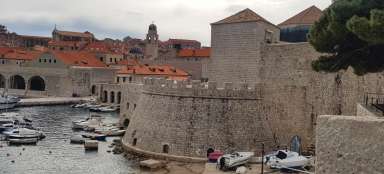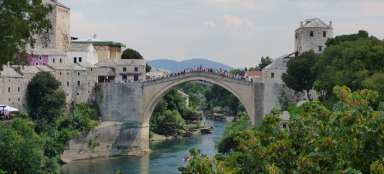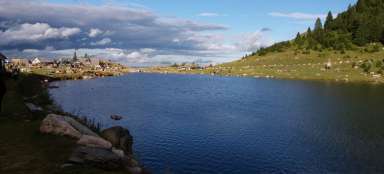Walled up castles
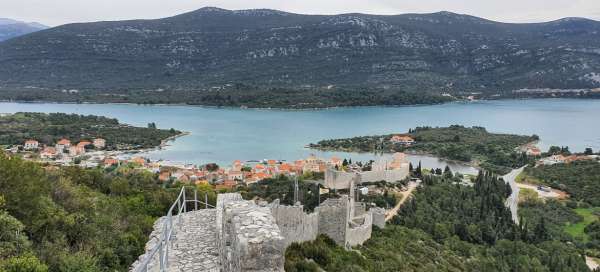
Ston and Mali Ston are two villages in southern Dalmatia, in Croatia. They are located in the southern part of the Pelješac Peninsula. The first documented settlement was the diocese in 877, followed in ancient times by the settlement of this area by the Greeks and Illyrians. This testifies to their good position, for which the inhabitants of the Republic of Dubrovnik later chose the cities for the construction of a massive fortification wall connecting the two cities over the hill. The walls of Ston were built in 1333, when Ston became part of the Republic of Dubrovnik. Their purpose was to defend the republic and the whole peninsula.
Mali Ston - Koruna
We chose the direction of travel from the village of Mali Ston along the walls to Ston, which takes about 45 minutes and count on many really many stairs climbed and descended along the walls. We walked back along the path leading along the road connecting the cities and it took about 15 minutes.
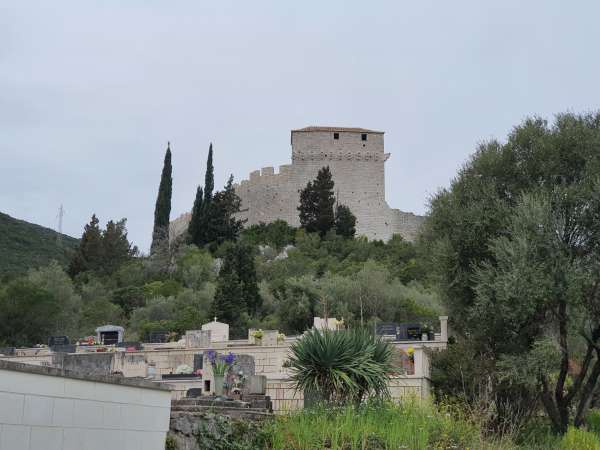
The city of Mali Ston
Mali Stone was founded in the 14th century by the Republic of Dubrovnik, as part of the massive fortification system of the town of Ston. Peljesac and seize from there islands in southern and central Dalmatia. It was here in Mali Ston that the Croats managed to repel the Serb attack. The city has undergone repairs, but even so, there are now only a few houses, often crumbling. Bojovka is a bit to find the beginning of the route, although there are arrows towards the castles (City walls). Admission is 70Kn per adult and the price includes entry to the castle Veliki Kaštel in Ston.
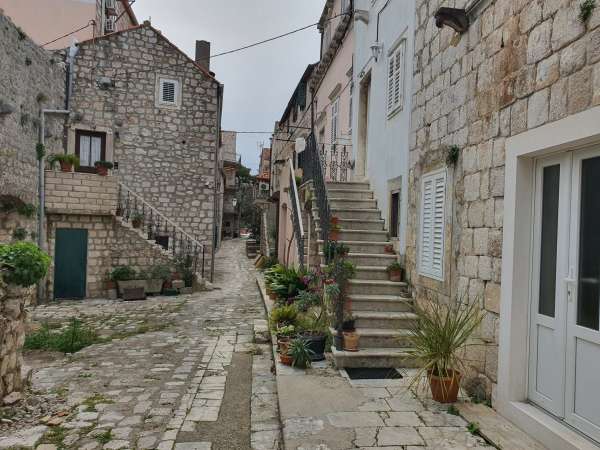
From the Crown to the walls
Above the town of Mali Ston rises the main fortress Koruna with 5 towers. From here, the journey begins along the walls, which connect the fortress with the entire fortress system of the town of Ston. From the fortress, the walls rise to the top of the Podzvizd hill with the highest fortress, the second branch of the walls turns into Ston.
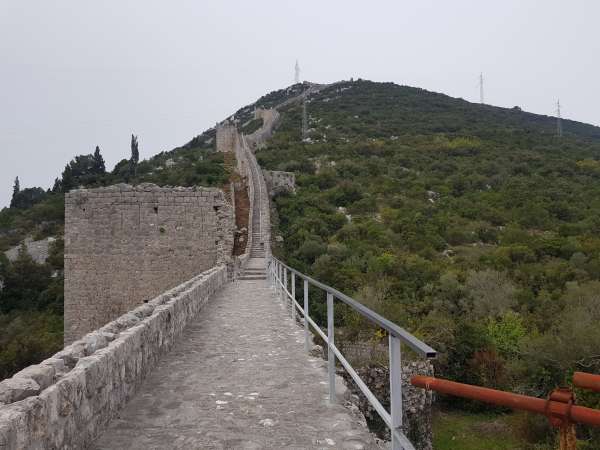
Views when climbing
As you climb the walls upwards, you can enjoy beautiful views of the below and receding Mali Ston with the Koruna Fortress and beyond, separating the Maloston Bay from the mainland, where oysters are abundantly caught.
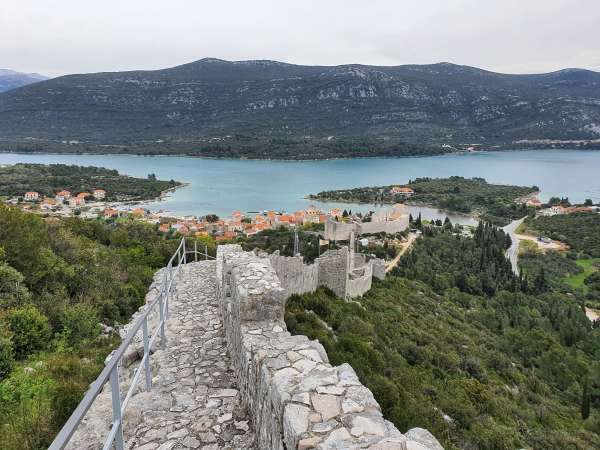
Following the contour
The system of fortifications included 3 large fortresses: Koruna in Malý Ston, Veliki Kaštel in Ston and Podzvizd on the hill between them. They were connected by a seven-kilometer wall and supported by 50 towers and 5 other fortresses. At present, the road to the top is closed, so you traverse the walls and pass the remains of stone towers.
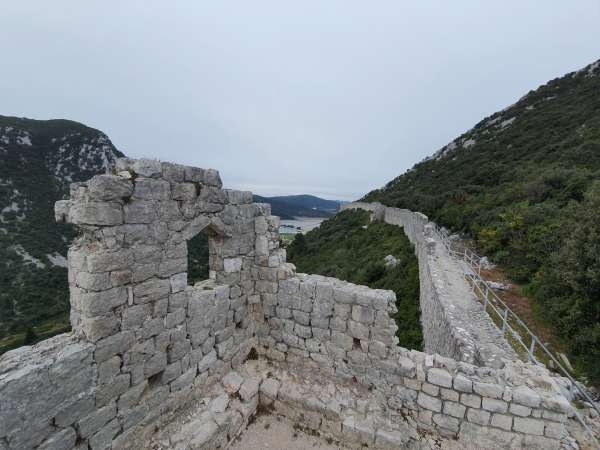
View of Ston
After a few hundred meters of traversing, the town of Ston appears, from which, however, you are separated by a relatively large elevation gain, which you have to work down the climbing stairs.
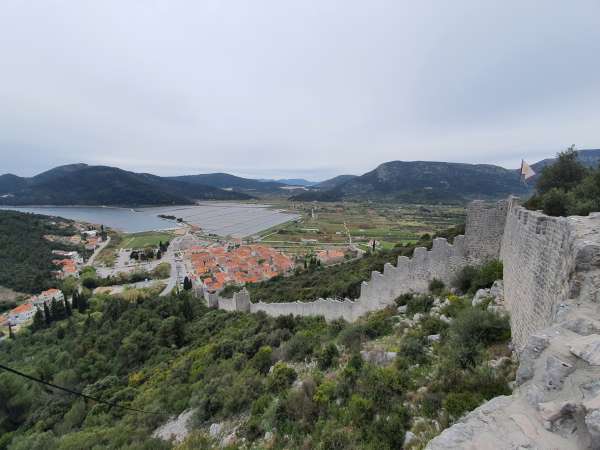
Smaller fortress above Ston
Ston is the old fortress town of the Republic of Dubrovnik, which it secured at the beginning of the 14th century from Bosnian and Serbian rulers, who had held it for several decades earlier. During the 14th and 15th centuries, the Dubrovnik Senate had a massive fortification built here. Several smaller fortresses (Kula Nad vodom, Stoviš, Minčeta, Sokolić, Arcimun and Barabanata) rise above the town of Ston, through which you can walk along the walls.

Church of St. Nicholas
Under the walls on the way to the town of Ston you will walk around the Franciscan monastery with the church of St. Nicholas. Inside is also the chapel of St. Michael from the 9th century. Around is a nicely landscaped park with benches and a playground.
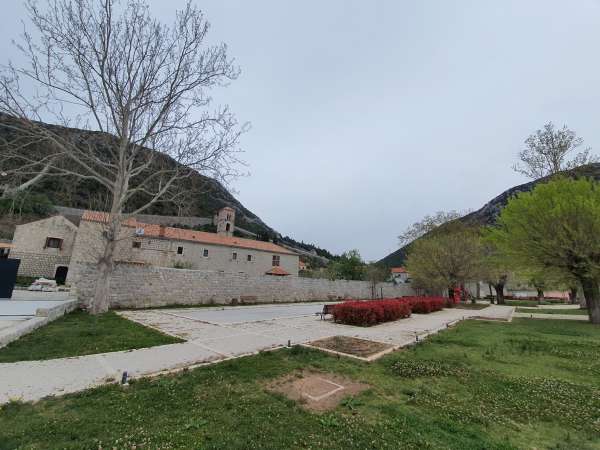
View of the walls
During a successful journey to the town of Stone, you can look back and see the entire walls along the roofs of the monastery (although the part to the Little Stone is covered by a hill).

Plan of the walls
In the park by the monastery behind the playground, you can see the map of the town of Ston and part of the walls that rise above the town, along with six smaller fortresses.
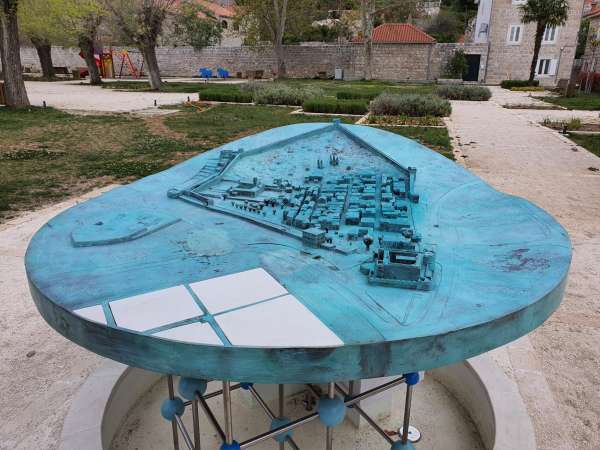
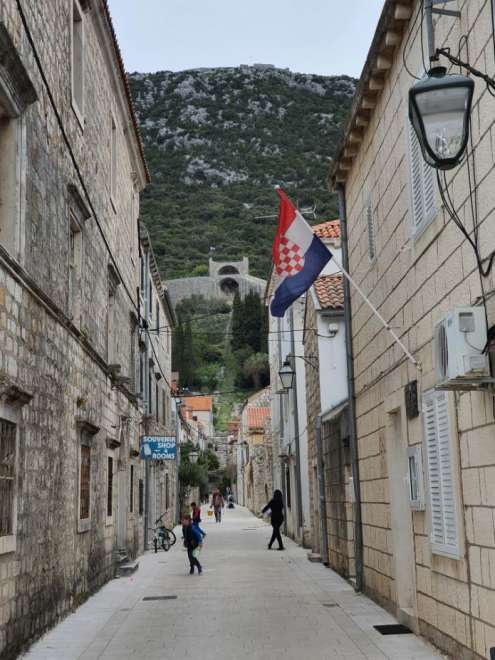
Ston city streets
Hand in hand with the construction of the walls went the construction of a new town – Ston. It consisted of fifteen blocks of ten houses separated by six-meter-wide main streets and two-meter-wide side streets. It was the largest urban project of its time. In the following centuries, the city lost its significance. In 1667 it was destroyed by an earthquake. Over time, the massive walls were damaged.
Great Castle
The largest of the fortresses in the entire fortification complex is Veliki Kaštel in the town of Ston. With a ticket to the walls, you get the opportunity to enter the Castle and see its courtyard and the upper galleries surrounded by cannons with national flags.
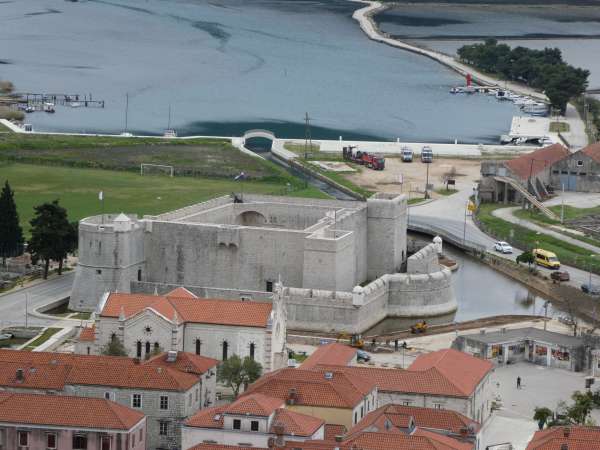
Saliny
Right behind the fortress are large but shallow bodies of water – the so-called salinas. Local salinas were the main source of income for the Republic of Dubrovnik until the 18th century. Profits from the sale of salt accounted for two-thirds of its revenue. According to archaeological excavations, salt was mined in this area as early as the 1st millennium BC. The Ottoman Turks also mined salt here for some time.
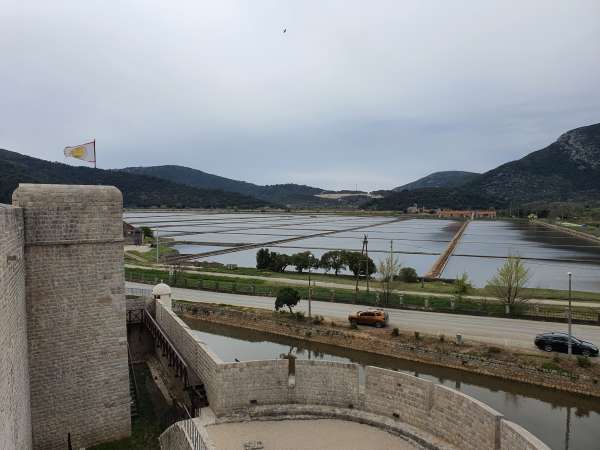

Behind the gate to the fishmonger
Right next to the fortress stands the city gate and behind it a fishmonger's, which invites, among other things, a local specialty – oysters. The waters of Maloston Bay are clean and healthy, and oyster farms are proof of this. Basically, these are suspended ropes lowered in the most convenient places to the right depth, about max. 9 meters, oysters are attached to the ropes at regular intervals. They grow to the optimal length in two to three years. Edible oysters are grown here, it is the original species of oysters in European seas. Approximately 2 million of them are caught annually.







